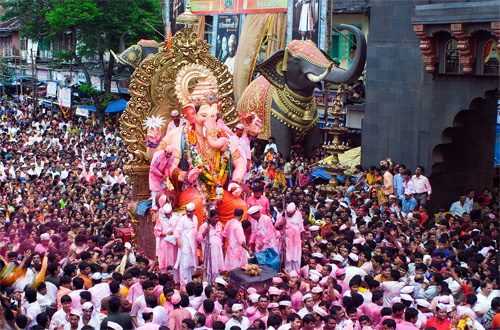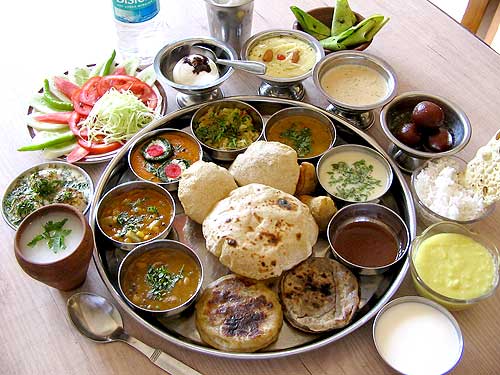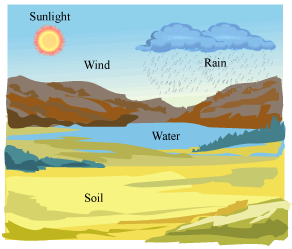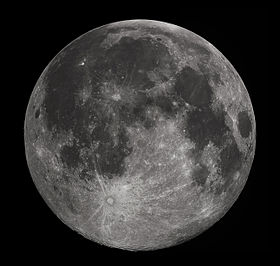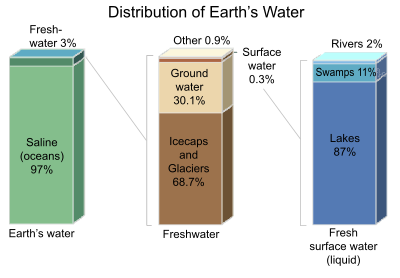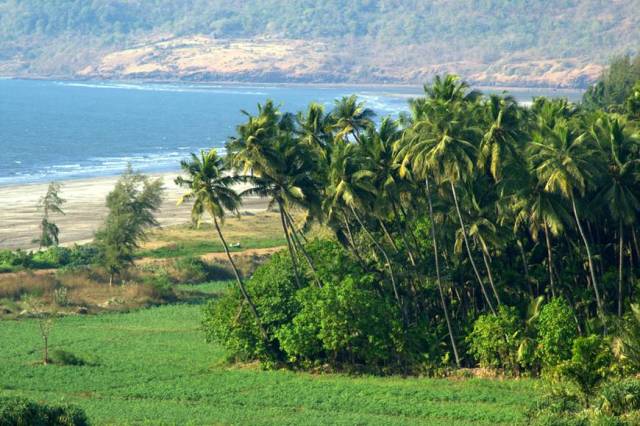Fourth Standard
Subject:-Geography
Topic:- Our Maharashtra State
Subtopic:-About State
Source:- Wikipedia
About State
Maharashtra is a state in the Southwestern region of India. It is the second most populous state after Uttar Pradesh and third largest state by area in India. Maharashtra is the wealthiest state in India, contributing 15% of the country’s industrial output and 13.3% of its GDP (2006–2007 figures).
Maharashtra is bordered by the Arabian Sea to the west, Gujarat and the Union territory of Dadra and Nagar Haveli to the northwest, Madhya Pradesh to the northeast, Chhattisgarh to the east, Karnataka to the south, Andhra Pradesh to the southeast, and Goa to the southwest. The state covers an area of 307,731 km2 (118,816 sq mi) or 9.84% of the total geographical area of India. Mumbai, the capital city of the state, is India’s largest city and the financial capital of the nation. Nagpur is the second capital of the state. Marathi is the official language.
- Religion:-
Hinduism:- Hindus form 83.2% of total population and Hinduism plays an important role in Maharashtrian people in their day-to-day life. Ganesh is the most popular deity amongst Marathi Hindus, followed by Krishna in the form of Vithal. They also worship the Shiva Family deities such as Shankar and Parvati. The Warkari tradition holds strong grip on local Hindus of Maharastra. The public Ganesh festival started by Lokmanya Tilak in the late 19th century is very popular. Marathi Hindus also revere Bhakti saints of all castes, such as Dnyaneshwar (Deshastha Brahmin), Savata Mali (Mali), Tukaram (Moray Maratahi-Kunbi), Namdev (Shimpi-Artsian,Vaishya) and Chokhamela (Mahar) and Banjara (Laman,Gormati).
Islam:-Islam is the second biggest religion in the state, with more than 11 million adherents comprising over 10% of the population. Eid-ul-Fitr (Ramzan Eid) and Eid-ul-Azha (Baqara Eid) are the most important Muslim festivals in the state. Within Muslims, Sunnis represent an overwhelming majority with an estimated 98% Muslims adhering to the Sunni Hanafi branch of Islam. Muslims follow Sufi traditions. Visiting the tombs of Sufi saints is very important to this community.
Jains:- Jainists are a major group in Maharashtra. Jain community census for 2001 in Maharashtra area was 1,301,843. Cultural roots on Maharashtra for Jainism explain this numbers, as this more than 2,500 year old religion has some ancient temples in Maharashtra.
Christians:-Christians account for 1,058,313 of Maharashtra’s population. Most of the Christians are Catholics, some Protestants. There are also Goan, Mangalorean, Keralite and Tamilian Christians in the urban pockets of Mumbai and Pune. There are two ethnic Christian communities in Maharashtra:
- East Indians – Majority Catholics, concentrated in Mumbai and in the neighbouring districts of Thane and Raigad. St Bartholomew preached to the natives of this region in the 1st century AD.
- Marathi Christians – Majority Protestants found specially in Ahmednagar and Solapur. Protestantism was brought to these areas by American and Anglican missionaries during the 18th century. Marathi Christians have largely retained their pre-Christian practices.
- Parsis, mainly found in Mumbai, have descended from a group of Iranian Zoroastrians who immigrated to Western India during 10th century AD, due to persecution by Muslims in Iran.
- Iranis, are comparatively recent arrivals, and represent the smaller of the two Indian-Zoroastrian communities.
Sikhism:- Sikhism is India’s fourth-largest religion and has existed for over 500 years, beginning with the birth of its founder Guru Nanak Dev ji. The Sikhs are predominantly located in Punjab, however the sikh community has a sizeable presence in Maharashtra. Sikh community census for 2001 in Maharashtra was 2,15,337. Nanded, the second largest city in the Marathwada region (after Aurangabad) of Maharashtra, is an important holy place for the Sikh faith and is famous for theHazur Sahib Gurudwara. Hazūr Sāhib (“presence of the master”), also spelled Hazoor Sahib, is one of the five takhts (seats of temporal authority) in Sikhism. Located on the banks of the River Godavari, it is where the 10th guru, Guru Gobind Singh Ji left human flesh. The Gurudwara within the complex is known Sach-Khand, “Realm of Truth”. At a stone-throw distance from the Hazoor Sahib Gurudwara, there lies the Langar Sahib Gurudwara which is very famous for its grand Langar. In all teh city boasts of 13 major Gurudwaras with historic significance.
Buddhism:-Most Marathi Buddhists are followers of the Dalit Buddhist movement, a 19th and 20th-century Buddhist revival movement in India that received its most substantial impetus from B. R. Ambedkar who called for the conversion of Dalits to Buddhism to escape a caste-based society that considered them to be the lowest in the hierarchy.[45] Buddhism accounts for nearly 6% in Maharastra’s total population.
Zoroastrians:- There are two Zoroastrian communities in Maharahtra.
Their descendants culturally and linguistically closer to the Zoroastrians of Iran, in particular to the Zoroastrians of Yazd and Kerman. Consequently, the Dari dialect of the Zoroastrians of those provinces may also be heard amongst the Iranis.
About State:- The Bene Israel (“Sons of Israel”) are a 6,000 strong community of Marathi Jews originally from villages in the Konkan region who migrated in the late 17th century to the nearby cities, primarily Mumbai, but also to Pune, and Ahmedabad. Prior to these waves of emigrations and to this day, the Bene Israel formed the largest sector of the subcontinent’s Jewish population. The native language of the Bene Israel is Marathi and Hebrew. Most Bene Israel have now emigrated to Israel. Before the migration this community numbered at least 30,000.
1) Aashadi Ekadashi is one of most important festivals celebrated across Maharashtra. It is also referred to as “WARI” and people from all over Maharashtra, Karnataka and other parts of India walk to Pandharpur from there respective villages.
2)Lord Ganesha’s devotion is celebrated by Ganesh Chaturthi in August–September of every year. Town of Pen in Raigad district is famous for Ganesh Idols made of special Shadu Clay. Dagdusheth Halwai Ganpati, Lalbaugcha Raja, Shri Siddhivinayak Temple, Shri Ashtavinayaka’s are the major holy places for Maharashtrians.
3)Popular forms of God are Shiva, Krishna and Ganesha. Lord Shiva’s devotion is celebrated by taking part in Maha Shivaratri (Great Night of Shiva) festival. In modern times, the Elephanta island in Mumbai, Lord’s Shiva island in local mythology, originated the Elephant Festival.
4)Lord Krishna’s devotions are celebrated in the state-wide Gokul Ashtami (or Krishna Janmashtami, Krishna’s birthday) whereby many devotees fast on the entire day until midnight. The Dahi-Handi (Matki-fod) is also observed on this day at many places. Lord Krishna’s devotion are also celebrated at Kaartik Aamawasya (orDiwali) and at Narak Chaturdashi as the killing of the demon Narakasura.
5)The other festivals celebrated on a large scale are Vijayadashami or Dasara (Marathi: दसरा), Navaratri, Holi, Diwali, Eid (Ramzan Eid). Simollanghan is a ritual performed on Dasara or Viajaya Dashami day in Maharashtra. Simollanghan is crossing the border or frontier of a village or a place. In ancient times, kings used to cross the frontier of their kingdom to fight against their rivals or neighbor kingdoms. They used to perform Ayudha Puja on Dasara and begin the war season. On Dasara, people cross the borders of their places (Seemollanghan) and collect the leaves of Apta tree (आपट्याची पाने) and exchange among their friends and relatives as gold (सोने म्हणून आपट्याची पाने देतात).People worship Shami tree and its leaves (शमीची पाने) on this day.
Saints (संत):-
Maharashtra has produced or been closely associated with many saints throughout its history. These have risen from all across the several castes. Some of the very revered examples of Bhakti saints are Dnyaneshwar, Tukaram, Namdev, sant Gora Kumbhar, Samarth Ramdas, Chokhamela, and Savta Mali. There have also been several other Harijan saints such as Sant Banka Mahar, Sant Bhagu, Sant Damaji panth, Sant Kanhopatra, Sant Karmamelam, Sant Nirmala, Sant Sadna, Sant Sakhubai, Sant Satyakam Jabali, Sant Soyarabai, and Sant Eknath. It has also been the birthplace and home of world-reputed saints like Sai Baba of Shirdi, Gajanan Maharaj of shegaon, Swami Shukadas Maharaj, Swami Samarth Maharaj, and Meher Baba, whose tomb-shrine in Meherabad has become a place of world pilgrimage. Maharashtra is also equally famous for ardent devotees (or Bhaktas). For example, Namdev Mahar and his wife Bhagubai from Kharagpur are both devotees of Shirdi Sai Baba. The Sai Baba template in Shirdi is the second richest one in the country, a close second after the Lord Tirupati temples at Tirumala, Andhra Pradesh. And Sant Sevalal Maharaj.
- Languages:-
Marathi is the Official language of Maharashtra. According to 2001 census, it is mother tongue of 68.89% of the population. Other languages which are Mother tongue by more than one percent of the people are as follows
|
Language |
Percentage in state |
| Marathi | 68.89 |
| Urdu | 7.13 |
| Hindi | 2.04 |
| Kannada | 11.50 |
| Gujarati | 2.39 |
| Telugu | 7.05 |
| Other languages |
1.05 |
Maharashtrian (or Marathi) cuisine :-
It is cuisine of the Marathi people, those from the state of Maharashtra in India. Maharashtrian cuisine covers a range from being mild to very spicy dishes. Wheat, rice, jowar, bajri, vegetables, lentils and fruit form important components of Maharashtrian diet.
Regular meals and Staple dishes:-
Maharashtrian meals (mainly lunch and dinner) are served on a plate called thali. Each food item served on the thali has a specific place. The bhaaji is served in the plate on the right hand side while the chutney, koshimbir are served from left going up the periphery of the circular plate. The papad, bhaaji are served below the koshimbir with the rice and poli served at the bottom of the circle closed to the diner’s hand. The puran is served at the top in the inner concentric circle. The amti, rassa is served in separate bowls placed on right hand side of the diner. Water is placed on the left hand side. It is considered ill mannered to use left hand while eating.
A typical Maharashtrian lunch or dinner usually starts with Poli (chapati), accompanied by one or more bhaaji(s) (cooked vegetables) and a koshimbir(vegetable salad) along with some sides(usually pickles, Chutneys, or papad (Poppadom)). This is usually followed by a second course of varan(lightly or unspiced Daal preparation), aamti (spicy Daal preparation) or rassa with rice. As with most of Indian cuisine however, each region and /or community has its own quirks, preferences and variations of the above general format.
Koshimbir is very common and healthy addition to the plate. Typically made from raw vegetables mixed with yogurt and ground roasted peanuts (Danyache Kut). Raitas made with different types of vegetables such as cucumber or carrots are variants of koshimbir.
There are lots of snack and side dishes in Maharashtrian cuisine. Some quintessentially Maharashtrian dishes are Poha, Chivada, Upma, Surali Wadi, Vada Pav, Misal, Matar Usal, Thalipith, Bhadang, Bakarwadi etc.Sweets/Desert like Puran Poli,Gulachi Poli,Modak,Karanji, Gulabjam, Kheer,Chirota, Gilabi etc.are most famous in Maharastra.
- Divisions and regions:-
Maharashtra is divided into six revenue divisions, which are further divided into thirty-five districts. These thirty-five districts are further divided into 109 sub-divisions of the districts and 357 Talukas in Maharashtra. The six administrative divisions in Maharashtra state are Amravati Division, Aurangabad Division,Konkan Division, Nagpur Division, Nashik Division, and Pune Division.
| Division | Districts |
| Mumbai (Konkan) | Mumbai, Mumbai Suburban (Mumbai Upanagar), Thane, Raigad, Ratnagiri, and Sindhudurg |
| Pune | Pune, Satara, Sangli, Solapur, and Kolhapur |
| Nashik | Nashik, Dhule, Jalgaon, Ahmednagar, and Nandurbar |
| Aurangabad | Aurangabad, Jalna, Latur/Lattalur, Nanded, Osmanabad, Parbhani, Hingoli, and Beed |
| Amravati | Amravati, Akola, Washim, Buldhana and Yavatmal |
| Nagpur | Nagpur, Chandrapur, Wardha, Bhandara, Gondia, and Gadchiroli |
Geographically, historically and according to political sentiments, Maharashtra has five main regions:
- Vidarbha Region – (Nagpur and Amravati divisions) – (Central Provinces and Old Berar Region)
- Marathwada Region – (Aurangabad division)
- Khandesh and Northern Maharashtra Region – (Nashik Division)
- Desh or Western Maharashtra Region – (Pune division) and
- Konkan Region – (Konkan Division) – (including, Mumbai City and Mumbai Suburban Area).
The state capital Mumbai City and Mumbai Suburban Area are the parts of the Konkan Division
- Transport:-
1)Roads
Maharashtra has the largest road network in India at 267,452 kilometers. 17 National Highways connect Maharashtra to six neighbouring states. The length of National Highways in Maharashtra is 3688 kilometers. Maharashtra has a large state highway network. 97.5 per cent of the villages in the state were connected by all-weather roads as of March 2010. The Yeshwantrao Chavan Mumbai-Pune Expressway, the first access controlled toll road project in India was made fully operational in April 2002.
The Maharashtra State Road Transport Corporation (MSRTC) has been providing passenger road transport service in the public sector since 1948, linking most of the towns and villages in and around the state with a large network of operation. These buses, popularly called ST (State Transport), are the preferred mode of transport for much of the populace.
2)Railways
The state is well-connected to other parts of the country with a railway network spanning 5,983 km between four Railways.
- The Central Railway and the Western Railway zones of the Indian Railways that are headquartered in Mumbai, at Chhatrapati Shivaji Terminus and Churchgate respectively,
- The Nanded division of the South Central Railway that caters to the Marathwada region of Maharashtra and
- The Konkan Railway, a subsidiary of the Indian Railways based in CBD Belapur, Navi Mumbaithat serves the Konkan coastal region south of Mumbai and continues down the west coast of India.
Maharashtra also has suburban railway networks that carry around 6.4 million passengers every day.
3) Civil Aviation
The booming Indian economy, growing tourism industry, entry of low cost airlines, liberalization of international bi-lateral agreements and liberalization of civil aviation policy at the centre has resulted in an unprecedented growth in air traffic. Most of the State’s airfields are operated by the Airports Authority of India (AAI) while Reliance Airport Developers (RADPL), currently operate five non – metro airports at Latur, Nanded, Baramati, Osmanabadand Yavatmal on a 95 year lease. The Maharashtra Airport Development Company Limited (MADC) that was set up by the Government in 2002 will take up development of Airports in the state that are not under the AAI or the Maharashtra Industrial Development Corporation(MIDC). MADC is playing the lead role in the planning and implementation of the Multi-modal International Cargo Hub and Airport at Nagpur (MIHAN) project.
Maharashtra has three international airports-
- Mumbai’s Chhatrapati Shivaji International Airport (among the busiest airports in India)
- Pune’s civil enclave international airport with flights to Dubai and Frankfurt
- Nagpur’s Dr. Babasaheb Ambedkar International Airport.
Other city airports such as, Aurangabad and Nanded, are served by scheduled domestic services.
4) Sea Ports
Maharashtra has three major ports at Mumbai (operated by the Mumbai Port Trust), the JNPT lying across the Mumbai harbour in Navi Mumbai, and in Ratnagiri, which handles the export of ores mined in the Maharastra hinterland. Additionally, there are 53 minor ports. Ferryboat services also operate at Mumbai, linking the city to neighbouring coastal towns. Minor ports in the state will be developed by the State government with the participation of the private sector under the Maharashtra Maritime Board. Seven minor ports are being developed in Phase-I.
Marathi is the official language of Maharashtra. Maharashtrians take great pride in their language and history, particularly the Maratha Empire, its founder Chhatrapati Shivaji Maharajis considered a folk hero across India. About 60% of Maharashtrians are Hindu, and there are significant Muslim, Christian and Buddhist minorities. There are many temples in Maharashtra some of them being hundreds of years old. These temples are constructed in a fusion of architectural styles borrowed from North and South India. The temples also blend themes from Hindu, Buddhist and Jain cultures. A National Geographicedition reads, “The flow between faiths was such that for hundreds of years, almost all Buddhist temples, including the ones atAjanta, were built under the rule and patronage of Hindu kings.” The temple of Vitthal at Pandharpur is the most important temple for the Varkari sect. Other important religious places are the Ashtavinayaka temples of Lord Ganesha, Bhimashankar which is one of the Jyotirling(12 important Shiva temples). Ajanta and Ellora caves near Aurangabad as well as Elephanta Caves near Mumbai are UNESCO World Heritage Sites and famous tourist attractions. Mughal architecture can be seen is the tomb of the wife of Aurangzeb called Bibi Ka Maqbara located at Aurangabad.
Maharashtra, like other states of India, has its own folk music. The folk music viz. Gondhal, Lavani, Bharud and Powada are popular especially in rural areas, while the common forms of music from the Hindi and Marathi film industry are favoured in urban areas.
The world famous film industry Bollywood is in Maharashtra, located in the economic capital of India, Mumbai. The Marathi film industry was once placed in Kolhapur but now is spread out through Mumbai too. The pioneer of Indian movie industry, Bharat Ratna Shri Dadasaheb Phalke, producer & director V. Shantaram are from Maharashtra
Women traditionally wear a nine yard or five yard sari and men a dhoti or pajama with a shirt. This, however, is changing with women in urban Maharashtra wearing Punjabi dresses, consisting of a Salwar and a Kurta while men wear trousers and a shirt.
The cricket craze can be seen throughout Maharashtra, as it is the most widely followed and played sport. Kabaddi and hockey are also played with fervor. Children’s games include Viti-Dandu (Gilli-danda in Hindi) and Pakada-pakadi .
Hindus in Maharashtra follow the Shalivahana Saka era calendar. Gudi Padwa, Diwali, Rangapanchami, Gokulashtami and Ganeshotsavare some of the festivals that are celebrated in Maharashtra. Ganeshotsav is one of the biggest festival of Maharashtra which is celebrated with much reverence and festivity throughout the state and has since some time become popular all over the country. The festival which continues over ten days is in honour of Ganesha, the deva (like guardian angel ) of learning and knowledge under the one supreme lord . A large number of people walk hundreds of kilometers to Pandharpur for the annual pilgrimage in the month of Ashadh.


